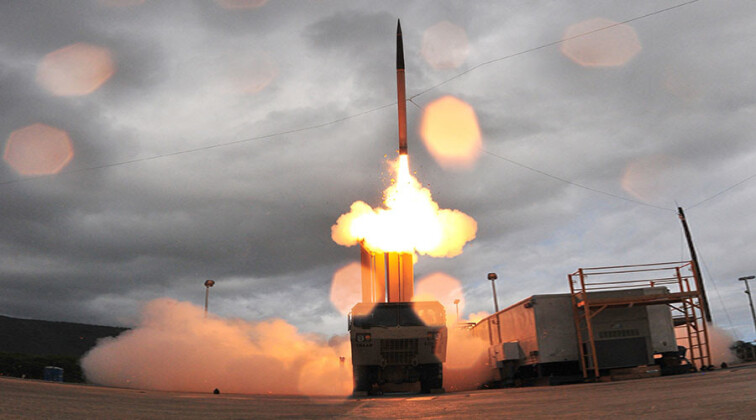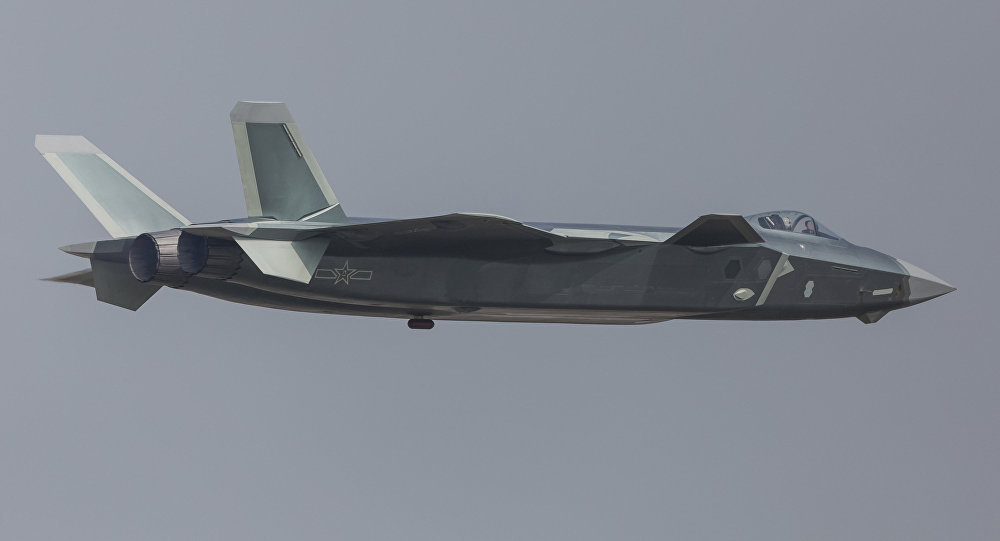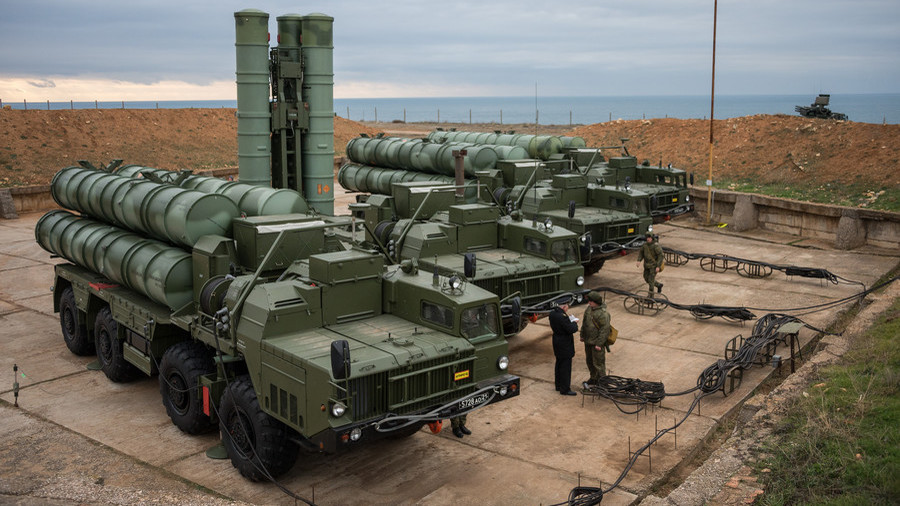Is THAAD Suitable For India? Can America's Air Defence System Replace the Russian S-400 to Secure Indian Airspace?

THAAD System Fires Interceptor
As part of a broader policy of targeting Russian arms exports and security ties across the world, the United States' efforts to press India to downgrade its defence ties with Moscow have recently specifically targeted Indian plans to acquire the Russian S-400 long range air defence platform.
As part of a broader policy of targeting Russian arms exports and security ties across the world, the United States' efforts to press India to downgrade its defence ties with Moscow have recently specifically targeted Indian plans to acquire the Russian S-400 long range air defence platform.
Aside from threatening the country with economic sanctions under the Countering America’s Adversaries through Sanctions Act (CAATSA), the U.S. has also indicated that it will cease to provide India with a number of defence products including Predator drones should India purchase the S-400.

Eff-ing Yankee Bully
Most recently, according to Indian sources, Washington has considered offering India its own long range air defence platform, the Terminal High Altitude Air Defence (THAAD) system, should Delhi abandon its plans to acquire the S-400. While THAAD costs considerably more than the Russian system, the success of the new U.S. strategy relies heavily on the weapons systems’ viability as a replacement for the S-400. A comparison of the two systems' capabilities gives an indication of the viability of this strategy.


THAAD Air Defence Battery
One of the primary reasons why India sought the Russian S-400, a platform designed with advanced anti stealth capabilities to counter American fighters such as the F-22 Raptor, was to protect the country's airspace against China's fast growing fleet of stealth assets. Alongside the Chinese J-20 air superiority fighter, and an upcoming medium fighter developed under the FC-31 program, China is also developing the H-20 stealth bomber and fields several cutting edge stealth drones. Furthermore, China is also reportedly aiding Pakistan to develop its own lightweight stealth fighter under a joint fifth generation fighter program to succeed the jointly developed fourth generation JF-17.
One of the primary reasons why India sought the Russian S-400, a platform designed with advanced anti stealth capabilities to counter American fighters such as the F-22 Raptor, was to protect the country's airspace against China's fast growing fleet of stealth assets. Alongside the Chinese J-20 air superiority fighter, and an upcoming medium fighter developed under the FC-31 program, China is also developing the H-20 stealth bomber and fields several cutting edge stealth drones. Furthermore, China is also reportedly aiding Pakistan to develop its own lightweight stealth fighter under a joint fifth generation fighter program to succeed the jointly developed fourth generation JF-17.
Unlike the S-400, THAAD not only lacks counter stealth capabilities but it also lacks anti meaningful aircraft capabilities entirely and is designed solely to intercept enemy ballistic missiles. This seriously limits its usefulness to India.


Chengdu J-20 Stealth Fighter
While the S-400 is capable of deploying multiple different missile types, from the 40km range 9M96E specialised counter stealth platform to the extreme range 40N6 which can target enemy aircraft with precision at ranges of up to 400km at hypersonic speeds, THAAD by contrast deploys only a single missile type. This means that unlike the S-400, the American system is incapable of providing multi layered air defence for Indian airspace.
While the S-400 is capable of deploying multiple different missile types, from the 40km range 9M96E specialised counter stealth platform to the extreme range 40N6 which can target enemy aircraft with precision at ranges of up to 400km at hypersonic speeds, THAAD by contrast deploys only a single missile type. This means that unlike the S-400, the American system is incapable of providing multi layered air defence for Indian airspace.
In addition, with the S-400 is highly compatible with existing Indian air defence platforms such as the S-125 and aircraft such as the Su-30MKI, THAAD struggle to work as part of a network with these Russian and Soviet made systems. Missiles launched by the THAAD system notably carry no warheads, and are restricted to ranges of approximately 200km. This means a single THAAD system can cover less than a quarter of the area of an S-400 armed with the 40N6. Thus not only are the weapons more expensive, but more batteries will be needed to cover the area of India’s borders.
Unlike the S-400, THAAD will be unable to engage hostile targets deep into enemy airspace due to its more limited range while the S-400 can engage hostile targets across Pakistan and much of China.


S-400 Air Defence Batteries
An analysis of THAAD’s capabilities indicate that the system is likely poorly suited to India’s defence needs and not an effective substitute for the S-400. As its name suggests, the missile system is designed to intercept missiles at high altitudes which, while valuable for the defence of the U.S. mainland from long range ballistic missiles, will have few applications against short ranged missiles deployed by China and Pakistan.
An analysis of THAAD’s capabilities indicate that the system is likely poorly suited to India’s defence needs and not an effective substitute for the S-400. As its name suggests, the missile system is designed to intercept missiles at high altitudes which, while valuable for the defence of the U.S. mainland from long range ballistic missiles, will have few applications against short ranged missiles deployed by China and Pakistan.
Alongside Chinese and Pakistani fighter and bomber fleets, their short range low altitude missiles will be able to pass through a THAAD defence shield unimpeded. Unlike the highly versatile S-400, THAAD is restricted to targeting enemy missiles at altitudes of 40-160km, while against short and medium missiles such as the Pakistani Ghauri and Chinese DF-12 the system would be effectively useless. This was attested to by numerous experts including former U.S. Chief of Naval Operations science advisor Theodore Postol, who noted that against such missiles “the THAAD defence can be expected to provide … no useful defence capability.”
The historically poor performances of U.S. made air defence systems, both in testing and in combat against relatively basic pre-Vietnam War era missiles, is another factor which must be taken into account which indicates that the reliability of THAAD may well also be highly questionable. The S-400, by contrast, has proven capable of intercepting even hypersonic missiles travelling at over Mach 8 when tested abroad.
With China being the only country to field hypersonic aircraft and hypersonic tactical medium-range glide vehicles, this capability is particularly useful.


Chinese WZ-8 Hypersonic Aircraft
Based on an analysis of its capabilities it can be concluded that THAAD is wholly incapable of replacing the S-400 not only in its ability to target advanced stealth aircraft, but in its ability to provide any meaningful defence against enemy fighters, bombers and short and medium range ballistic missiles. These platforms will comprise the vast majority of attacks on Indian territory in the event of war. Indeed, given the very limited threat posted by high altitude intermediate and intercontinental range ballistic missiles to India, due to the country’s proximity to its adversaries, the uses for the THAAD system remain very limited.
Based on an analysis of its capabilities it can be concluded that THAAD is wholly incapable of replacing the S-400 not only in its ability to target advanced stealth aircraft, but in its ability to provide any meaningful defence against enemy fighters, bombers and short and medium range ballistic missiles. These platforms will comprise the vast majority of attacks on Indian territory in the event of war. Indeed, given the very limited threat posted by high altitude intermediate and intercontinental range ballistic missiles to India, due to the country’s proximity to its adversaries, the uses for the THAAD system remain very limited.
Ultimately India has great need for the S-400 to retain parity with its neighbours in light of the growing sophistication of their aerial warfare and missile capabilities, with China being the world's only country to both field and produce heavyweight fifth generation fighter aircraft and one of just two to field any domestically developed stealth fighters alongside the United States.
The U.S. and its Western allies' inability to provide a comparable air defence system is largely a result of their very limited investments in the field compared to Russia and the Soviet Union, with NATO having long emphasised neutralising targets from the air rather than with surface to air munitions.
Hahaha... the Russian "Military Watch" propaganda website again... everything Russian is beautiful in that website...
ReplyDeletewhich nation's website do you read? wakakaka
Delete